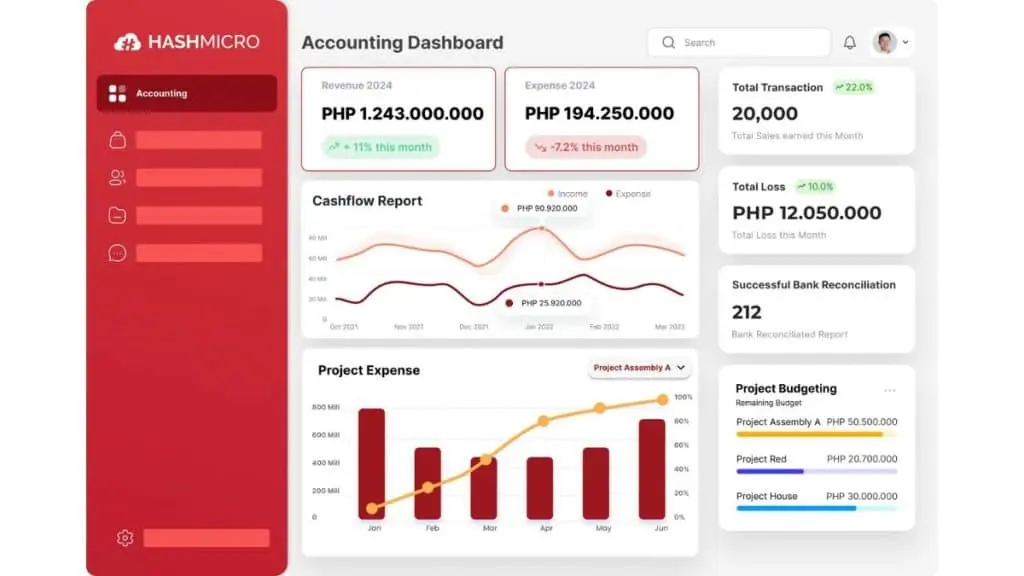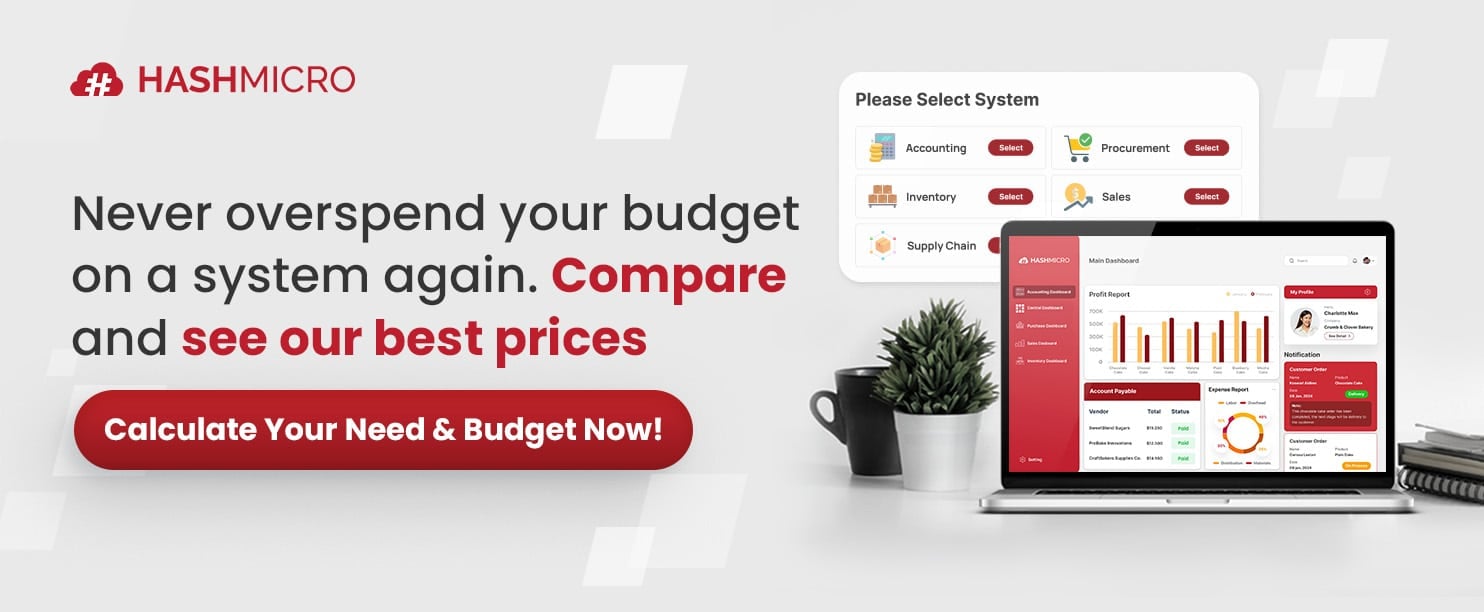Effectively managing operating expenses is essential for business success, but it often presents a significant challenge for managers who must balance daily requirements with budget limitations. As costs continue to rise, accurate expense management is more crucial than ever.
Many businesses encounter neglected expenses, irregular budgeting, and poor tracking, which can result in budget overruns and unmet financial targets. These common challenges emphasize the need for organized expense management.
This article explores operating expenses and examines the top accounting tools and solutions to simplify expense management. Continue reading to discover how to optimize operating costs and the tools to assist the process.
Table of Content
Content Lists
Key Takeaways
|
What is Operating Expense?
An operating expense (OpEx) is a cost incurred by a business as part of its routine activities necessary to maintain daily operations. Examples include rent, salaries, marketing, insurance, and research expenses, all of which are vital for the smooth functioning of the business.
To calculate these costs accurately, companies typically use the operating expense formula, which helps monitor spending and manage financial resources efficiently. Proper documentation, including the collection of tax invoices, is essential to ensure that all expenses are recorded correctly for accurate calculations.
When businesses understand how to calculate operating expenses, they can track their operating expense ratio, a key measure of financial health. Maintaining a balanced ratio helps keep costs under control, allowing more resources to be directed toward growth instead of merely covering general and administrative expenses.
Different Types of Operating Expenses
Grasping the different types of operating expenses is crucial for sound financial management. Each category affects a business’s profitability and recognizing them helps companies allocate resources efficiently and maintain a balanced expense ratio.
- Rent: Leasing business premises, such as offices or warehouses, is a major part of operating expenses. Effective rent management helps maintain a healthy operating expense ratio.
- Salaries and Wages: This often represents one of the largest general expenses, covering employee compensation. Accurate calculations using an operating expense formula ensure proper budgeting.
- Accounting and Legal Fees: These expenses supporting compliance and business integrity are categorized as administrative costs. They are vital for minimizing risks and maintaining regulatory compliance.
- Bank Charges: Transaction fees, account maintenance, and other banking services impact cash flow. Effectively managing these costs improves the operating expense ratio.
- Sales and Marketing Fees: The costs of promoting the business and reaching customers are crucial for growth. Balancing these expenses is key to managing operating expenses efficiently.
- Office Supplies: Items like paper and computer accessories are essential for daily operations. Tracking these costs prevents small expenses from accumulating uncontrollably.
- Repairs: Expenses for maintaining equipment and facilities ensure smooth operations. Timely maintenance can prevent larger, unforeseen costs in the future.
- Utilities Expenses: Essential services like electricity, water, and internet are necessary for daily operations. Monitoring these costs within operating expenses helps optimize resource management.
- Cost of Goods Sold (COGS): This includes direct production costs, such as raw materials and labor, essential for profitability. Tracking COGS alongside operating expenses provides a full financial overview.
Businesses can improve their overall OpEx and strengthen financial stability by identifying and managing operating expenses. Proper expense management boosts operational expenditure efficiency and allows companies to concentrate on growth and long-term success.
How to Calculate Operating Expenses
Calculating operating expenses is simple and offers valuable insights into a business’s financial status. By using the operating expense formula, companies can total various costs, like payroll, rent, utilities, and marketing, to clearly understand their overall expenditures.
Here’s the most widely used formula to calculate operating expenses:

To understand operating expenses clearly, it’s important to factor in both direct and overhead costs that support daily operations. Expenses such as insurance, taxes, and administrative costs contribute to the total OpEx.
Knowing how to calculate operating expenses allows businesses to assess their operating expense ratio, an important efficiency measure. By regularly calculating this ratio, companies can monitor and control their costs, ensuring resources are allocated effectively for long-term growth.
Examples of Operating Expenses
Operating expenses include the necessary costs for a business to maintain its daily operations. These expenses vary, covering employee wages, marketing, and office supplies, and are vital for effective financial planning.
Let’s explore some key examples of operating expenses to understand better how they affect business efficiency and profitability.
1. Personnel costs
Personnel costs encompass salaries, benefits, and other employee-related expenses, a major part of operating expenses. These costs are crucial for maintaining a productive and motivated team.
They include regular salaries, bonuses, health benefits, and retirement contributions. By managing these expenses efficiently, such as optimizing staffing levels and reward programs, companies can improve their operating expense ratio while retaining a skilled workforce.
2. Occupancy expenses
Occupancy expenses include costs related to maintaining a business’s physical location, such as rent, utilities, and property taxes. These expenses are vital to daily operations and directly affect the company’s financial performance.
For instance, reducing unnecessary occupancy costs, such as unused storage space, can enhance the operating expense ratio. Businesses frequently explore alternatives like remote work or shared office spaces to lower these costs while still fulfilling their space requirements.
3. Administrative expenses
Administrative expenses cover the essential costs that support business operations, including software subscriptions, legal fees, and communication expenses. While these are part of general expenses that keep operations running smoothly, they can be optimized with the right tools.
Transitioning to digital tracking systems or renegotiating supplier contracts can reduce these costs. Businesses can enhance their operating efficiency by effectively managing administrative expenses without compromising key functions.
4. Marketing and advertising costs
Marketing and advertising expenses cover campaigns, ad placements, and brand promotions, all essential for business growth. Though reducing these costs may seem appealing, a well-optimized strategy improves the operating expense ratio by focusing on the most effective channels.
For example, digital marketing can often reach a wider audience more cost-effectively than traditional methods like TV ads. Balancing different media ensures maximum reach without exceeding the budget.
5. Research and development (R&D) expenses
R&D expenses cover the costs of developing new products, enhancing existing ones, or researching new technologies. While categorized as operating expenses, they reflect a company’s dedication to innovation and industry leadership.
Allocating a budget for R&D is crucial for sustained growth in competitive industries. Leading companies invest heavily in this area to expand into new markets, proving that a strategic R&D budget can give businesses a competitive edge.
6. Interest and finance charges
Interest and finance charges occur when a company takes on debt to sustain operations or drive growth, making them a key component of operating expenses. Managing these costs effectively involves securing favorable loan terms and maintaining controlled debt levels.
One example is inventory financing, where businesses use inventory as collateral to obtain loans with better conditions. Calculating operating expenses, including interest, helps companies to plan their financial strategy more effectively.
7. Depreciation and amortization
Depreciation and amortization represent the gradual reduction in the value of physical and intangible assets, affecting a company’s reported expenses. Although they don’t require cash outflow, these non-cash expenses are crucial for accurately reflecting a business’s financial health.
Depreciation applies to tangible assets, while amortization covers intangibles like patents, reducing taxable income. Accounting for these expenses ensures compliance with tax regulations and enhances the accuracy of the operating expense calculation.
With the right accounting system, tracking depreciation and amortization becomes effortless, ensuring clear and compliant financial records. Use our software pricing calculator to discover how an accounting system can enhance your expense tracking.
Operating vs Non-Operating Expenses
Operating expenses are crucial for a business’s daily operations and contribute to revenue generation. These costs, such as payroll, rent, utilities, and administrative fees, ensure smooth business functioning and are typically calculated using the operating expense formula.
Meanwhile, non-operating expenses are costs unrelated to a company’s main operations, like loan interest or asset disposal losses. Businesses and accountants separate these from OpEx to better understand operational performance, as they do not represent routine business activities.
Distinguishing between operating and non-operating expenses is essential for financial accuracy, particularly when evaluating profitability or calculating the operating expense ratio. By identifying core costs and accurately computing operating expenses, businesses can make better financial decisions and enhance operational efficiency.
OpEx vs CapEx

OpEx, or operating expenses, refers to the daily costs required to keep a business running, including payroll, rent, and utilities. These costs are usually deducted in the same year they are incurred, allowing companies to assess their operating expense ratio and manage cash flow efficiently.
In contrast, CapEx (capital expenditures) refers to investments in long-term assets that provide benefits over several years, such as property, machinery, or patents. Instead of being expensed immediately, these costs are capitalized and deducted gradually over the asset’s useful life, following applicable accounting guidelines.
Differentiating between OpEx and CapEx is essential for financial planning, as it affects tax treatment and cash flow management. Knowing how to calculate operating expenses and capital expenditures helps businesses evaluate their financial health, correctly apply the operating expense formula, and make well-informed budgeting decisions.
Fixed Costs and Variable Costs
When evaluating cost modeling, managers categorize costs as fixed or variable to identify spending patterns. Fixed costs, like rent and insurance, remain unchanged regardless of production, providing stability for financial planning.
In contrast, variable costs, such as raw materials, labor, and sales commissions, adjust based on production levels. Understanding how to calculate operating expenses with these variations allows businesses to align spending with demand.
Depending on their function or context, some expenses can be classified as either fixed costs or variable costs. For instance, a full-time employee’s salary remains constant, while a production worker’s wages may fluctuate based on output, directly affecting the operating expense ratio.
Optimizing Your Operating Expenses Calculation with HashMicro’s Accounting Software

HashMicro Accounting Software is an excellent solution for Philippine businesses seeking efficient operating expense management. It is equipped with advanced accounting tools and BIR CAS compliance, simplifies tax reporting, and ensures regulatory adherence.
Designed to tackle common challenges in expense management, HashMicro’s accounting software enhances accuracy and efficiency. Its comprehensive features streamline expense tracking, budgeting, and forecasting, enabling businesses to optimize their operating expenses easily.
HashMicro offers a free demo for those looking to explore this solution. This demo provides a firsthand experience of its capabilities and showcases tools that improve cost control, automate routine tasks, and give businesses a clearer financial overview.
Here are some key features HashMicro provides to simplify operating expense management:
- Bank Integrations – Auto Reconciliation: This feature automates matching bank transactions with internal records, minimizing manual errors and keeping financial data up to date. It simplifies monthly reconciliations and ensures accurate and consistent expense tracking.
- Profit & Loss vs Budget & Forecast: Businesses can easily compare actual expenses against their budget, identifying discrepancies. This enables proactive adjustments to keep operating costs within planned limits.
- Cashflow Reports: These reports clearly show cash inflows and outflows, essential for managing daily operational expenses. Monitoring cash flow ensures businesses can meet financial obligations without disruptions.
- Forecast Budget: This feature helps predict future expenses, improving budget accuracy. Businesses can use these insights to allocate resources wisely and prevent unexpected cost overruns.
- Financial Statement with Budget Comparison: This feature highlights variances between actual financial performance and budgeted figures, offering valuable insights. Tracking these differences helps businesses refine their budgeting strategies for better cost control.
- Budget & Realization: This feature allows real-time tracking of expenditures against the budget, ensuring spending stays aligned with financial plans and reducing the risk of overspending.
- Automated Currency Update: Automatic currency rate updates ensure precise conversions for international transactions, preventing financial discrepancies. This is especially useful for businesses managing multi-currency expenses and financial reporting.
- Treasury & Forecast Cash Management: This feature forecasts cash availability, helping businesses plan for recurring expenses and maintain sufficient liquidity, ensuring stable operations and sustainable growth.
Beyond these features, HashMicro provides customization options to suit any business’s unique needs and complexity. It also seamlessly integrates with third-party systems, offering a flexible, all-in-one solution for expense management and enhanced efficiency.
Conclusion
Operating expenses, including payroll and utilities, are vital for sustaining daily business operations. Effective management is key to financial stability, so companies must use the right tools to ensure accuracy, efficiency, and spending control.
HashMicro’s Accounting Software offers a powerful solution for Philippine businesses to simplify operating expense management. Automated reconciliation, real-time tracking, and budget forecasting help companies gain financial clarity, optimize resources, and control expenses efficiently.
Sign up for HashMicro’s free demo to experience its full benefits. Discover how it streamlines expense management while enhancing financial stability. Take control of your business growth with this powerful tool.
Frequently Asked Questions
-
What is included in operating expenses?
Operating expenses, or SG&A (selling, general, and administrative expenses), cover the essential costs of running a business. These include expenses like rent, utilities, marketing, advertising, sales, accounting, and salaries for management and administrative staff.
-
What are examples of pre-operating expenses?
Pre-operating expenses are costs incurred before a business officially opens. Examples include recruitment and training of new staff, market research, site visits, regulatory fees like permits and licenses, administrative costs like office rental, and fees for training programs or seminars.
-
What are non-operating expenses?
Non-operating expenses are costs not directly tied to the company’s core activities. These can include interest payments, one-time costs from asset disposal, or inventory write-downs.

































